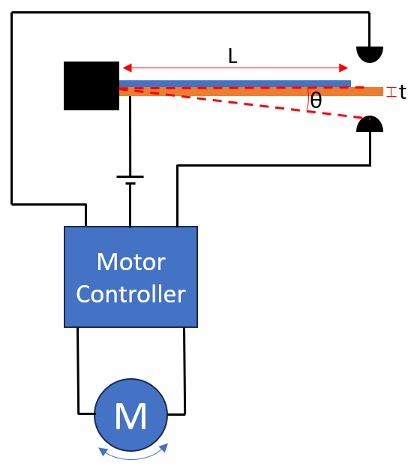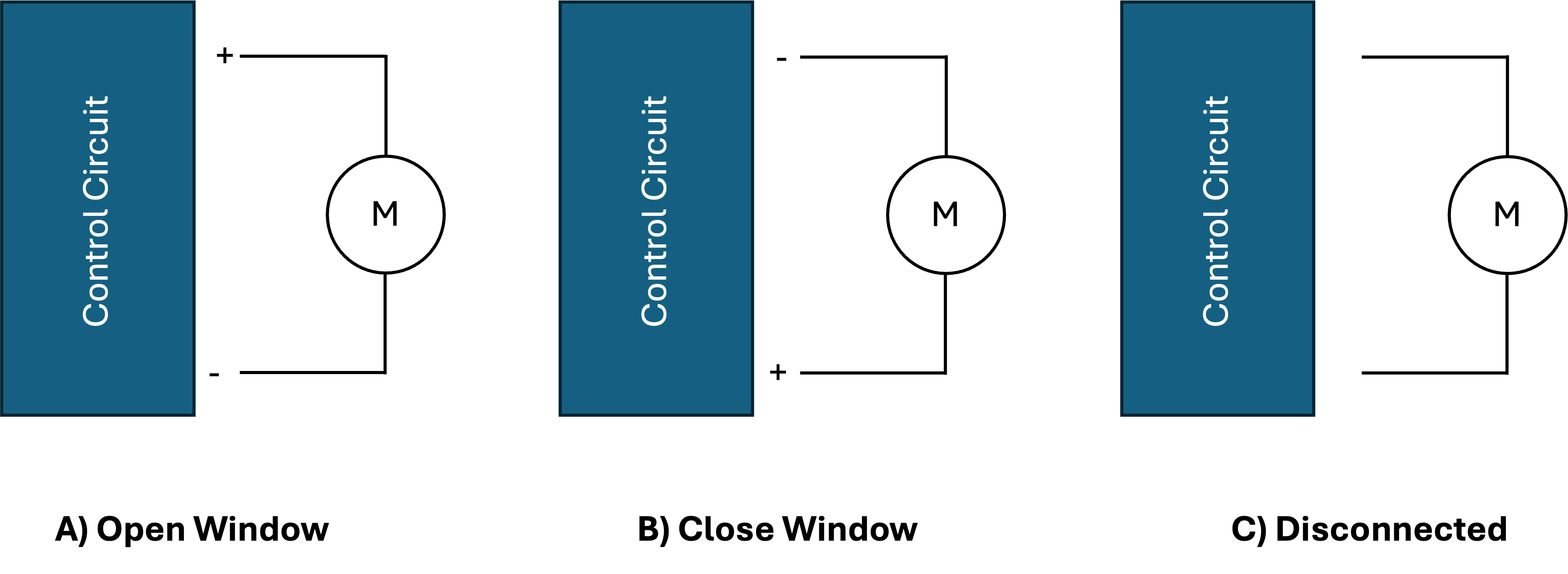Automated Greenhouse Window Vent- Motor Control
Introduction
This session will explore the use of a bimetallic strip as a temperature-sensitive switch to automatically control the opening and closing of the greenhouse. A bimetallic strip bends in response to temperature changes, allowing it to make or break an electrical contact in the motor control circuit.

The strip will be in the neutral position at 20°C. When 25°C is reached, the strip will bend upwards and make contact, driving the motor to open the greenhouse. When 15°C is reached, the strip will bend down and make contact with the opposing contact to close the greenhouse.
Part 1: Simple Design
The strip is made of copper and steel. The length, L, of the bending part of the strip is 3 cm. The required angle of deflection, θ, is +/-10 deg. Coefficients of thermal expansion can be found through this link.
Exercise 1
Determine the thickness, t, of the strips assuming they have the same thickness.
The guided example in Lecture 13 of Solid Mechanics should provide you with the steps needed to carry out this calculation. Here is a link to the moodle page.
Part 2: Spiral Bimetallic Strip
An alternative design is suggested which uses a spiral bimetallic strip, offering a greater length (L) for thermal expansion within a compact form. This design ensures a more significant and sensitive mechanical response to temperature changes.
![Spiral Bimetallic Strip (modified from [1])](./imgs/203/spiral-bimetallic.jpg)
Exercise 2
The same set of equations used previously can still be applied to this new design. Assuming each of the strips has thickness 0.25 mm, what length is required?
This online calculator can be used to calculate the geometry of an Archimedes spiral (one with constant gap between successive spiral turns).
Exercise 3
Determine a suitable geometry considering overall space constraints (i.e. what will the final diameter be?)
Extension Tasks:
Now that you have a basic design for the bimetallic switch, you may consider looking into the motor control circuit. The circuit should do the following enable the three different states below based on the location of the bimetallic strip.

References:
- https://www.cooksinfo.com/bimetallic-coil-thermometers
- https://demonstrations.wolfram.com/BimetallicSpiralThermometer/